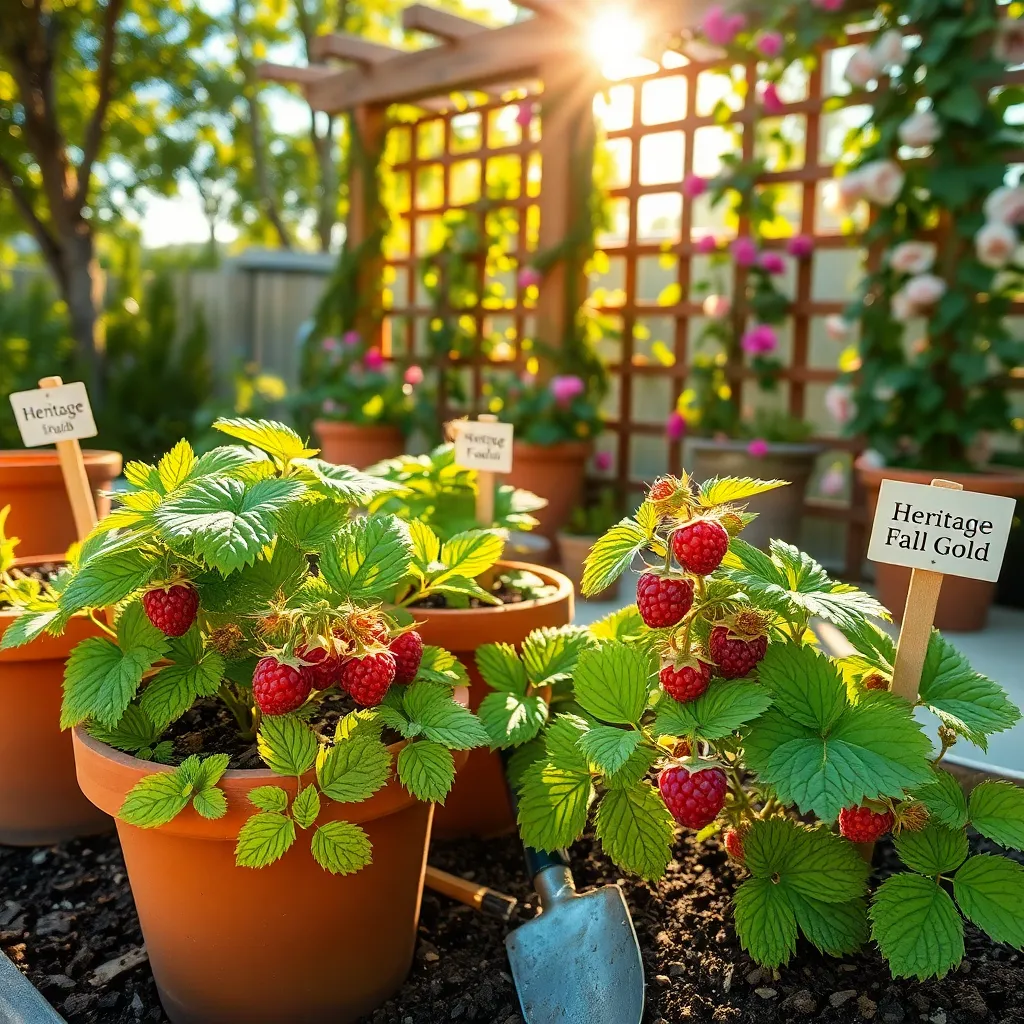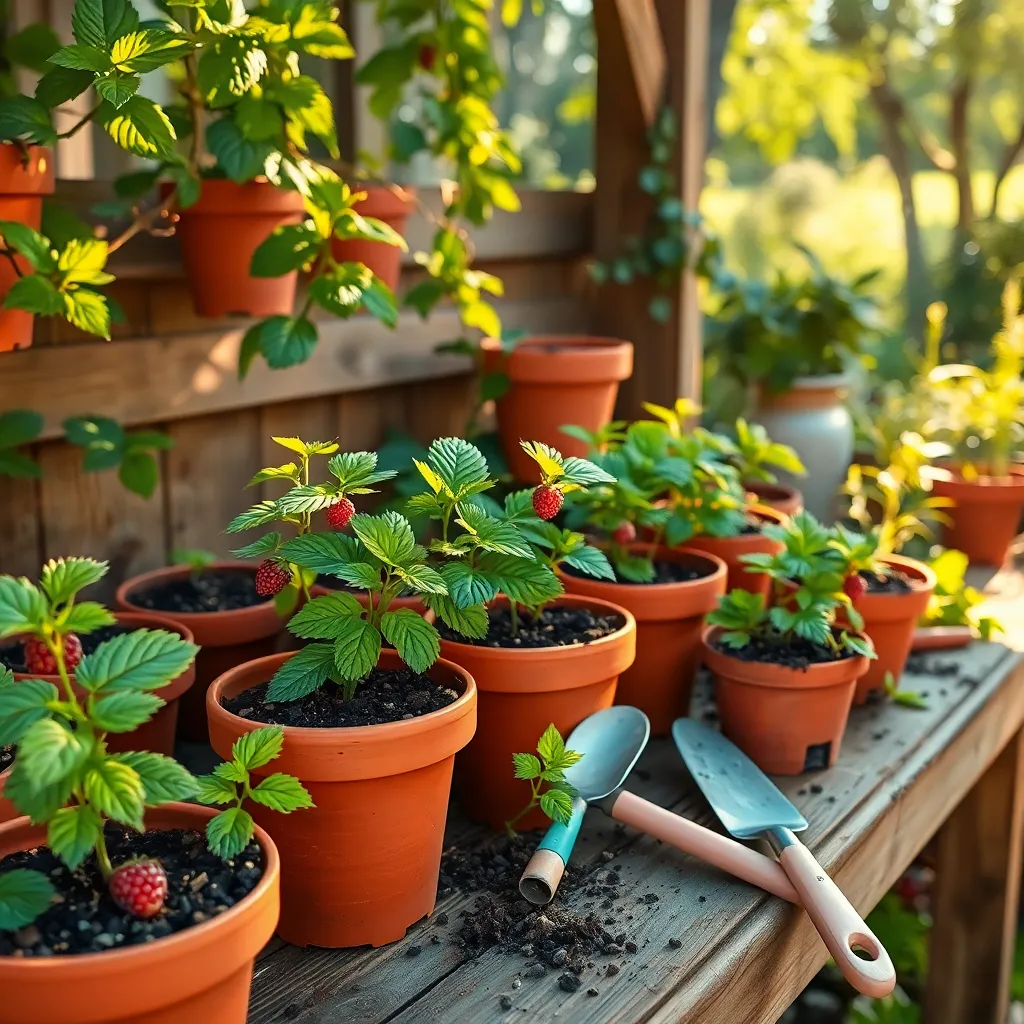Imagine plucking sun-warmed raspberries from your very own patio or balcony—a sweet reward for your efforts in container gardening. Whether you’re a novice gardener or a seasoned green thumb, growing raspberries in pots opens up a world of possibilities, turning even the smallest spaces into fruitful havens. This vibrant endeavor not only maximizes limited areas but also allows you to indulge in the freshest, juiciest berries directly from your doorstep.
Growing raspberries in pots is more than just an exercise in space-saving; it’s an invitation to explore the joy of nurturing your own produce. As you embark on this journey, you’ll discover how to select the right raspberry varieties for container growth, understand the importance of pot size and soil composition, and master the art of watering and fertilizing for abundant yields. By the end of this guide, both beginners and experienced gardeners alike will feel empowered to transform their outdoor spaces into thriving raspberry patches.
For those eager to dive in, this article will walk you through the essential steps, offering practical tips that ensure success and satisfaction. We’ll delve into the nuances of positioning your pots for optimal sunlight and maintaining the perfect balance of nutrients to support healthy plant growth. With each tip and trick, you’ll gain confidence and knowledge, ready to savor the delightful taste of home-grown raspberries and share the bounty with friends and family.
Select Suitable Raspberry Varieties

Choosing the right raspberry variety is crucial when growing them in pots, as space is limited and conditions vary from in-ground planting. Consider compact, dwarf varieties like ‘Raspberry Shortcake’, which are specifically bred for container growth and have a manageable size.
For gardeners in cooler climates, summer-bearing raspberries such as ‘Cascade Delight’ perform well, producing fruit once a year with large, flavorful berries. In warmer regions, you might opt for everbearing varieties like ‘Heritage’, which fruit twice a year, providing an extended harvest period.
Each variety has specific care requirements; however, all raspberries appreciate well-draining soil. Use a quality potting mix enriched with compost, and ensure the pot has adequate drainage holes to prevent waterlogging.
Watering is another critical factor for successful raspberry growth in pots. Aim to keep the soil consistently moist but not waterlogged, watering deeply whenever the top inch of soil feels dry to the touch.
Prepare an Appropriate Pot

Choosing the right pot for your raspberry plants is crucial for their growth and productivity. Select a pot that is at least 16 inches in diameter and depth to ensure enough room for the roots to spread and thrive.
It is essential to ensure good drainage to prevent waterlogging, which can lead to root rot. Opt for pots with multiple drainage holes and consider adding a layer of pebbles at the bottom for improved drainage.
Material choice matters too; terracotta pots are breathable but can dry out quickly, while plastic pots retain moisture but may not allow as much airflow. If you live in a hot climate, consider using lighter-colored pots to help keep the root zone cooler.
For healthier plants, fill the pot with a high-quality potting mix rich in organic matter. You can enhance the soil by mixing in some well-rotted compost or aged manure to provide the nutrients raspberries need to flourish.
Use Quality Potting Mix

To ensure your raspberries thrive in pots, using a quality potting mix is essential. Opt for a mix that is loose and well-draining, as raspberries do not like to sit in waterlogged soil.
Look for potting mixes that contain a blend of peat, perlite, and vermiculite. These components help maintain the right balance of moisture and aeration, crucial for healthy root development.
For a nutrient boost, consider adding a slow-release fertilizer to the potting mix before planting. This will provide a steady supply of nutrients as your raspberries grow, supporting fruit production.
Advanced gardeners might mix their own potting blend tailored to raspberries. Incorporating organic matter like compost or aged manure can enhance soil fertility and improve water retention.
Plant Raspberry Canes Correctly

When planting raspberry canes in pots, it is crucial to select pots that are at least 18 inches in diameter and have good drainage holes. This ensures that the roots have enough space to grow and prevents water from accumulating, which can lead to root rot.
Begin by filling the pot with a high-quality potting mix, enriched with compost to provide essential nutrients. Position the raspberry cane in the center of the pot, ensuring that the root ball is slightly below the rim of the pot to allow for watering.
Next, cover the roots with the potting mix, gently firming it around the cane to remove any air pockets. Water the plant thoroughly after planting, ensuring that the soil is evenly moist but not waterlogged.
For optimal growth, place the pot in a location that receives at least six to eight hours of sunlight daily. Raspberries thrive in full sun, and adequate light is essential for fruit production.
To support the growing canes, consider installing a small trellis or stakes in the pot. This provides stability and helps train the canes as they grow, preventing them from bending or breaking under the weight of the fruit.
Water and Fertilize Regularly

Raspberries need consistent watering to thrive in pots, especially during the warmer months. It’s essential to keep the soil evenly moist but not waterlogged, as overly wet soil can lead to root rot.
Begin by checking the top inch of soil daily, watering when it feels dry to the touch. Aim to water in the morning, allowing the foliage to dry throughout the day, which helps prevent fungal diseases.
Using a drip irrigation system can be beneficial for maintaining consistent moisture levels. For those who prefer a hands-on approach, a watering can with a narrow spout provides control over the amount of water delivered directly to the soil.
In addition to ample watering, fertilizing regularly is crucial for the health of raspberry plants in containers. Use a balanced, slow-release fertilizer to provide a steady supply of nutrients throughout the growing season.
Apply the fertilizer according to the manufacturer’s instructions, generally every six to eight weeks. For a more organic approach, consider using compost or well-rotted manure, which can also improve soil structure and fertility.
Advanced gardeners might experiment with liquid fertilizers, which can be applied more frequently and are quickly absorbed by plants. This method allows for precise nutrient management, especially during peak growing periods.
Conclusion: Growing Success with These Plants
In cultivating a thriving relationship, much like growing raspberries in pots, success lies in attention and care. First, establish a strong foundation by choosing the right environment where your relationship can flourish. Second, nurture it with consistent communication and understanding, ensuring it remains healthy and vibrant. Third, protect it from external threats, just as you would guard your raspberries from pests. Fourth, provide the nourishment it needs through shared experiences and quality time, allowing your bond to deepen. Finally, be patient and adaptable, recognizing that growth takes time and effort.
To start strengthening your relationship today, take a moment to express genuine appreciation to your partner, acknowledging their importance in your life. This simple act can reinforce your connection and set the stage for deeper growth.
Bookmark this article now, ensuring you have quick access to these essential insights whenever you need a reminder on nurturing your relationship. Remember, the journey to a fulfilling partnership is ongoing, and with the right care and commitment, your relationship can continue to blossom beautifully for years to come.
